Design
As its first task was to carry troops at least to the first line of enemy trenches, engineers had to rework the Mk.V extensively. In itself the roomy Mk.V* was able to carry up to 10 infantrymen. However, they were confined in a highly gassy and extremely noisy fighting compartment. By the time they disembarked through the small doors not really suited for the task, they would have lost most of their combat abilities. But worst of all was that only ten infantrymen, even with full ammunition, would not last long as a fighting unit in itself when casualties amounted to hundreds in small spots. The new requirement of the army command was the ability to carry no less than fifty infantrymen, or 10 tons of payload. A freight which could be placed either inside or outside, as part of the ammunition could be fixed in a roof housing for the superstructure. Another option was towing three carriages. Thus, the tank hull would have been significantly lengthened, while retaining almost the same height and width. The variant chosen had two large oval doors on the sides, fitted for effective mass landing and many pistol ports to fire from inside when approaching. Accordingly, the sponson idea was dropped and standard weapons restricted only to two 8 mm (0.31 in) Hotchkiss machine guns mounted on the sides.The internal layout largely differed from the Mk.V*. In the process obtaining the largest compartment possible, the engine was shifted forward and the the gearbox backwards. Installed on the roof of the driver compartment was a low cylindrical commander's cupola. The size of the central troop compartment was 13 by 8 ft (4 x 2.45 m). Cramming fifty infantrymen inside was even in theory extremely difficult, so it was decided to accommodate only 30 men with full equipment. The most important innovation was the installation of two roof exhaust fans to extract engine fumes. General protection remained similar to the Mk.V *. Enhanced armor protection could only be added at the expense of ride comfort (since it was unsprung), speed and mobility in general on soft terrain. As a result the frontal, sides and stern plates thickness did not exceeded 10 mm (0.39 in).
The wheeltrain consisted of 24 doubled rollers with blocked suspension, and front and rear guide wheel drive. Configuration was, as usual, of the rhomboid type, with metal links having a 521 mm (20.5 in) length shoe, and 194 mm (7.64 in) pitch. The upper part of the guide tracks was maintained by two tension rollers on each side.
Production of the Mark IX
Construction of the first prototype, dubbed "The Pig", began at Marshall, Sons & Co. factory, Gainsborough, in June 1918 and completed in October. In tests the maximum speed was about 6.5 km/h (4.04 mph) but on rough terrain, this fell to just 1.3 km/h (0.8 mph). It could overcome trenches up to 3.8 meters (12.47 ft) large, and had a ground pressure of 1.95 kg\cm2. According to other data, the maximum speed on road was 13.5 km/h (8.39 mph) and the range 89 km (55.3 mi). During trials several changes were ordered, one of which was the installation of a muffler near the fans. Nevertheless the Mk.IX failed to completely get rid of all the disadvantages of rhomboid tanks. The still uncompartmented engine and excessive weight caused poor mobility in the field. Nevertheless, the Mk.IX was produced since the Allies were determined to implement "Plan 1919", the large-scale, heavily mechanized final assault on Germany. Among other things, it called for supply and transport tanks. As a result before the armistice only two tanks had been ready for field tests on the Western Front, and only one of the first three then assembled was ready during October and November 1918. This sole Mk.IX was used in France as a sanitary conveyor. The remaining 34 Mk.IXs were finished after the war, and none would seen actual combat although they participated in some exercises.The world's first APC
In late 1917, after studying reports of previous tank actions, the British general staff agreed that the Tank Corps lacked a specialized supply model, which could also function as a tracked armored personnel carrier. This was the tank Mark IX, based one the long Mk.V* (star) for simplicity of design. It was originally intended to be quickly fitted with armed sponsons if needed. The idea of an APC was not new however. Colonel Estienne had already envisioned that the Schneider CA-1 would carry four men plus its crew right to enemy the trenches. But it was so cramped that this perspective was dropped. But what is amazing is that there will be no tracked APCs until 1944, when the Allies experimented with turretless tanks, the "kangaroo", which showed the need for specialized tracked, heavily armored and well armed vehicles for troop transport. This concept was fully developed during the Cold War.The world's first amphibious APC
Shortly before the end of the war the first Mk.IX tested the ability to install floats for wading. As such, it was emptied, and reinforced on the flanks and fore part of the hull. The landing doors were sealed and gaskets used for pumping air. Movement in water was provided by the rotation of the tracks, but special blades attached to the links were added for extra grip. In addition, a roof compartment housed part of the gear-cutting equipment, and tailpipes get through it. The amphibious Mk.IX was unofficially called "The Duck" and began a test series in November 11, 1918, conducted at Dolly Hill. These were considered successful, although the tank was very slow and had low water buoyancy. In addition, this configuration precluded placement of access doors and the installation of a powerful weaponry. In November 1918 the tests were terminated. The only amphibious Mk.IX was subsequently scrapped, but the data obtained in the tests helped later in the construction of more advanced amphibious tanks by Vickers. So far, only one Mk.IX noted IC 15 survived, now exhibited at the Bovington Tank Museum.Tank Mark IX specifications |
|
| Dimensions | 16 ft x 6 ft x 7.5 ft (9 x 4 x 2.13 m) |
| Total weight, battle ready | 14.5 tons (10,230 lbs) |
| Crew | 4 (commander, driver, co-driver, machine-gunner/mechanic) + 30 infantrymen |
| Propulsion | 8-cyl Gasoline Lanchester, 60 hp @ 2200 rpm - 12.5 hp/t |
| Top Speed | 8 mph (12 kph) |
| Suspension | Unsprung |
| Range | 150 km (90 mi) |
| Armament | 1 x Vickers Water cooled cal.303 (7.69 mm) machine-gun |
| Armor | Maximum 8 mm (0.30 in) |
| Total production | 36 |
Video

Mark IX in its regular livery, Somme sector, October 1918

Camouflaged Mark IX "Pig" in 1919.
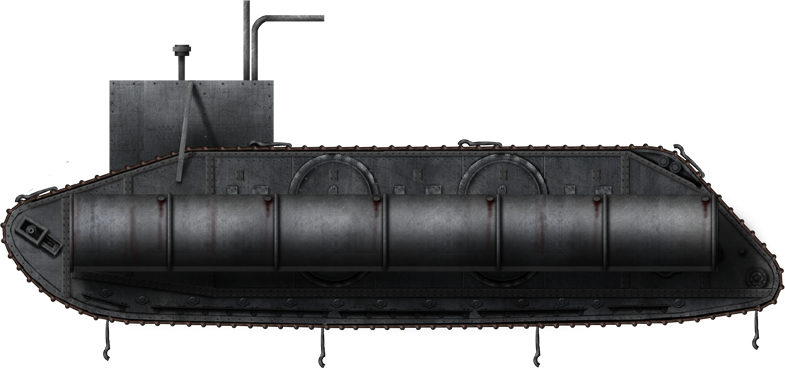
Amphibious Mark IX "Duck" during tests, Devon.
Gallery
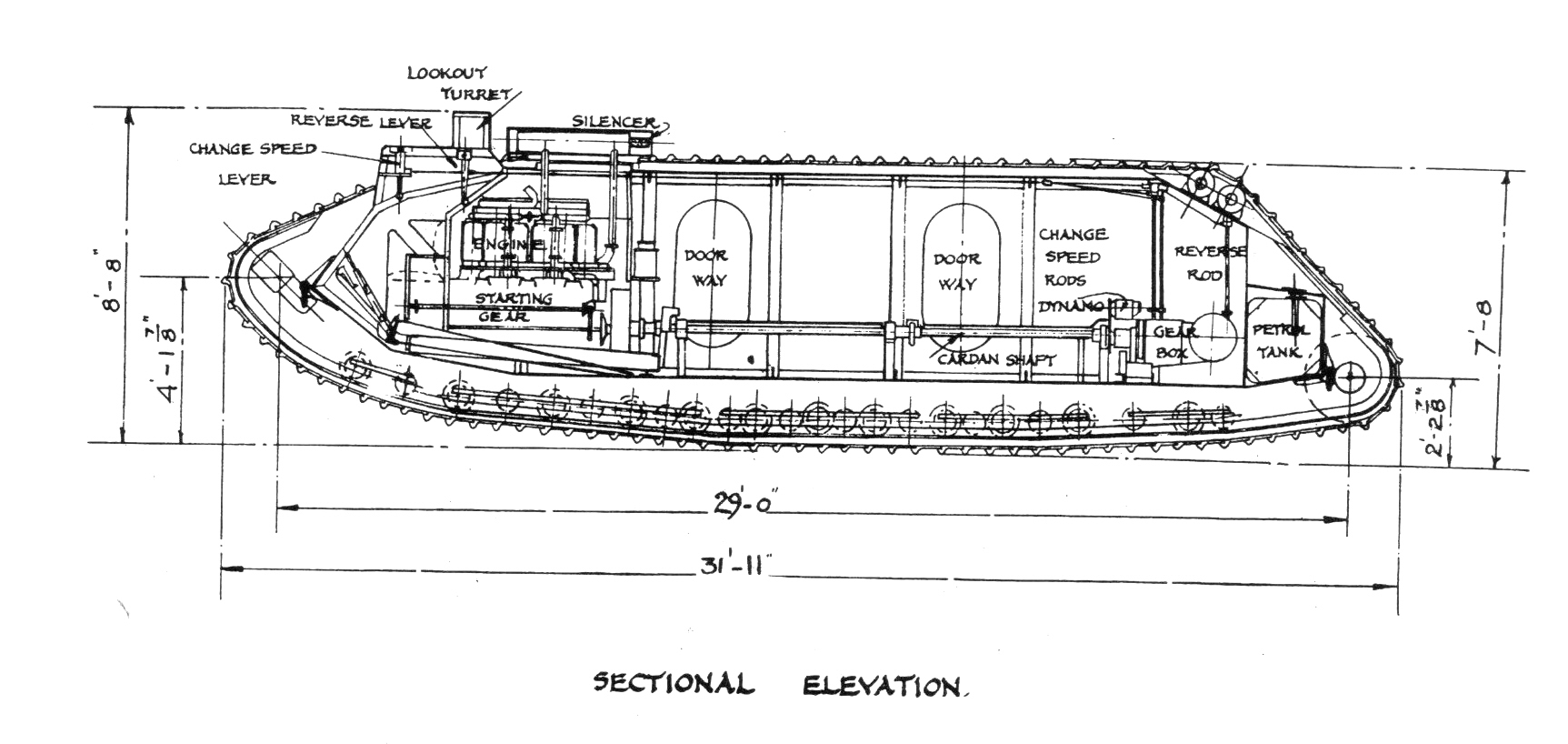
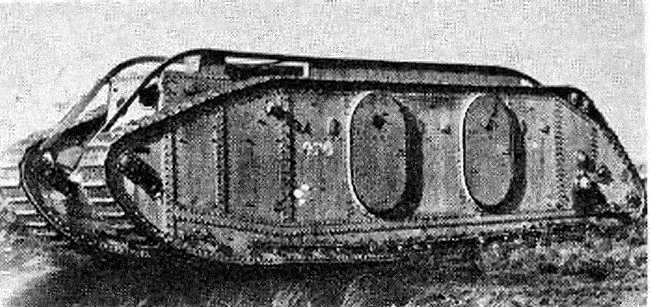
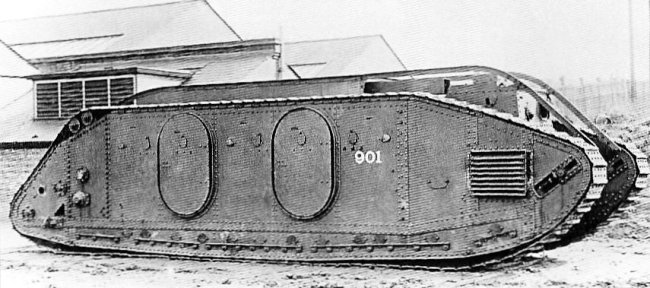
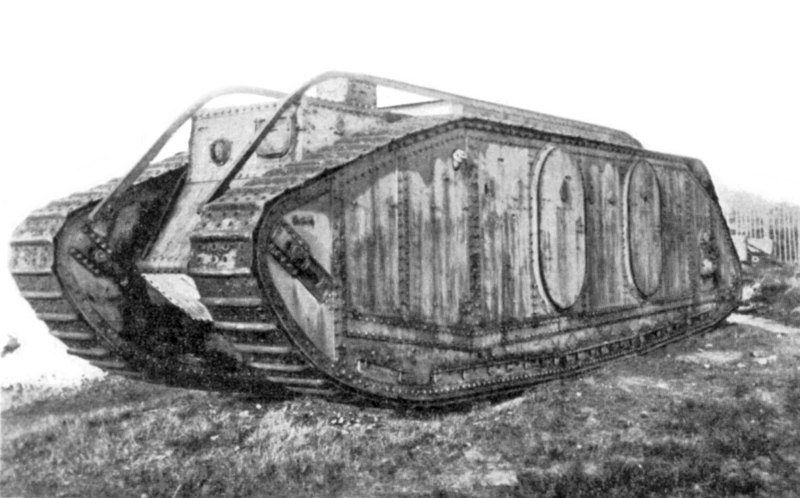
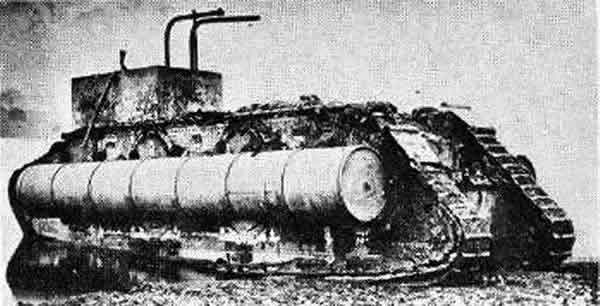

The Great War
 Austria-Hungary
Austria-Hungary Belgium
Belgium British Empire
British Empire France
France German Empire
German Empire Italy
Italy Russia
Russia USA
USAWW1 tanks posters

